
Employee Engagement For Dummies
Published by:
John Wiley & Sons, Inc.,
111 River Street,
Hoboken, NJ 07030-5774,
www.wiley.com
Copyright 2014 by John Wiley & Sons, Inc., Hoboken, New Jersey
Published simultaneously in Canada
No part of this publication may be reproduced, stored in a retrieval system or transmitted in any form or by any means, electronic, mechanical, photocopying, recording, scanning or otherwise, except as permitted under Sections 107 or 108 of the 1976 United States Copyright Act, without the prior written permission of the Publisher. Requests to the Publisher for permission should be addressed to the Permissions Department, John Wiley & Sons, Inc., 111 River Street, Hoboken, NJ 07030, (201) 748-6011, fax (201) 748-6008, or online at http://www.wiley.com/go/permissions .
Trademarks: Wiley, For Dummies, the Dummies Man logo, Dummies.com, Making Everything Easier, and related trade dress are trademarks or registered trademarks of John Wiley & Sons, Inc., and may not be used without written permission. All other trademarks are the property of their respective owners. John Wiley & Sons, Inc., is not associated with any product or vendor mentioned in this book.
LIMIT OF LIABILITY/DISCLAIMER OF WARRANTY: WHILE THE PUBLISHER AND AUTHOR HAVE USED THEIR BEST EFFORTS IN PREPARING THIS BOOK, THEY MAKE NO REPRESENTATIONS OR WARRANTIES WITH RESPECT TO THE ACCURACY OR COMPLETENESS OF THE CONTENTS OF THIS BOOK AND SPECIFICALLY DISCLAIM ANY IMPLIED WARRANTIES OF MERCHANTABILITY OR FITNESS FOR A PARTICULAR PURPOSE. NO WARRANTY MAY BE CREATED OR EXTENDED BY SALES REPRESENTATIVES OR WRITTEN SALES MATERIALS. THE ADVISE AND STRATEGIES CONTAINED HEREIN MAY NOT BE SUITABLE FOR YOUR SITUATION. YOU SHOULD CONSULT WITH A PROFESSIONAL WHERE APPROPRIATE. NEITHER THE PUBLISHER NOR THE AUTHOR SHALL BE LIABLE FOR DAMAGES ARISING HEREFROM.
For general information on our other products and services, please contact our Customer Care Department within the U.S. at 877-762-2974, outside the U.S. at 317-572-3993, or fax 317-572-4002. For technical support, please visit www.wiley.com/techsupport .
Wiley publishes in a variety of print and electronic formats and by print-on-demand. Some material included with standard print versions of this book may not be included in e-books or in print-on-demand. If this book refers to media such as a CD or DVD that is not included in the version you purchased, you may download this material at http://booksupport.wiley.com . For more information about Wiley products, visit www.wiley.com .
Library of Congress Control Number: 2013952423
ISBN 978-1-118-72579-5 (pbk); ISBN 978-1-118-75606-5 (ebk); ISBN 978-1-118-75618-8 (ebk); ISBN 978-1-118-75626-3 (ebk)
Manufactured in the United States of America
10 9 8 7 6 5 4 3 2 1
Foreword
Wouldn't you love to have a job where you woke up every morning with such a fire in your belly that you couldn't wait to get to work? Wouldn't you love it if you could be absolutely passionate about the work in which you're engaged, feeling a sense of deep purpose, meaning, and challenge in what you're doing? Finally, wouldn't it be great if you were so deeply engrossed in your work that you completely lost track of time? These three characteristics vigor, dedication, and absorption define a highly engaged employee. No wonder managers are striving to create conditions in which employees can experience high engagement. Those same managers see employee engagement as a sustainable source of competitive advantage that their competitors simply cannot copy. More specifically, they see high employee engagement as something that is valuable, rare, and difficult to imitate.
There is a well-defined logic that links employee engagement to bottom-line results, but several important preconditions, or characteristics of an organization's culture, need to be in place before employees can become highly engaged. These include features such as job challenge and a sense that employees are learning continuously; job autonomy, or the opportunity to work without close supervision; a supportive supervisor; an organizational climate of respect and trust; a work arrangement that matches each employee's desire for work-life fit; and economic security, the belief that your job is not at risk because your employer practices smart management to avoid downsizing. If those conditions are present, employees tend to be highly engaged and committed to their employers, and they intend to stay.
Employee engagement - at the individual, work team, and organizational levels is a topic of great practical importance to employees and to their managers, and there is a strong business case to encourage organizations of every stripe to take steps now to enhance employee engagement. Bob Kelleher's Employee Engagement For Dummies provides solid guidance about how to do just that, whether by promoting a sense of purpose and meaning in the work that an organization does, through leadership and coaching strategies, by harnessing generational values, by developing work teams that really work, by branding, or by gamification. The evidence to date suggests that high employee engagement levels are a win-win for all concerned, and that we all should strive to promote high levels of engagement. Yes, work can be fun!
Wayne F. Cascio, PhD
Denver, Colorado
Chapter 1
Basic Training: Employee Engagement Basics
In This Chapter
 Defining employee engagement
Defining employee engagement
 Identifying engagement drivers
Identifying engagement drivers
 Hiring an engaged workforce
Hiring an engaged workforce
 Measuring and recognizing engagement
Measuring and recognizing engagement
S omething's not quite right at work. People talk about leaving as soon as the economy improves. They no longer speak well of the company to each other or to potential recruits. It's as though people are just getting through the day, the week, or the month that they're only there for the paycheck. There's a growing sense among employees that they've become easily replaceable commodities or, worse, that their positions could simply be eliminated to save payroll. Or maybe things aren't so dire people don't seem to be complaining, but your organization or department just lacks oomph. No one seems to be putting in the extra effort. Your colleagues seem to run out the door at quitting time.
Does any of this sound familiar? If so, what you're witnessing is a lack of engagement among employees. And you're not alone. In recent years, companies all over the world have seen employees tune out. Whether due to the changing global economy, job instability, changes in the world of work, changes in society as a whole, or any number of other reasons, this lack of employee engagement is a serious problem for businesses and workers alike!
Don't believe me? A 2013 report released by Gallup, titled State of the American Workplace Report, concludes that only 30 percent of workers are engaged, 52 percent are disengaged, and 18 percent are actively disengaged. Author Mark Crowley of Fast Company likens the workforce to a crew team. On this team, three of the rowers are paddling like crazy, five are casually taking in the scenery, and two are actively trying to sink the boat. Obviously, this team will not win the regatta!
It's not just Americans whose boats are sinking, so to speak. A 2013 survey on engagement by Dale Carnegie Training found that, globally, 34 percent of workers are engaged, 48 percent are disengaged, and 18 percent are actively disengaged.

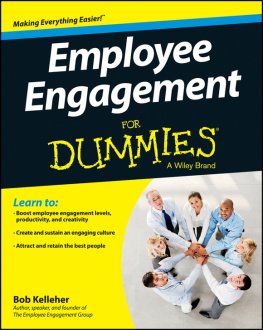
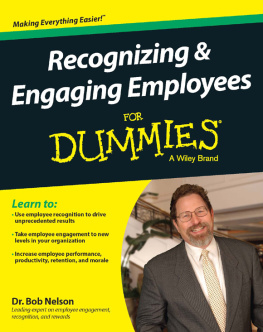
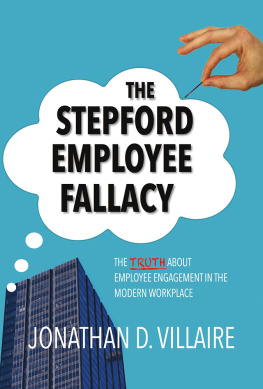
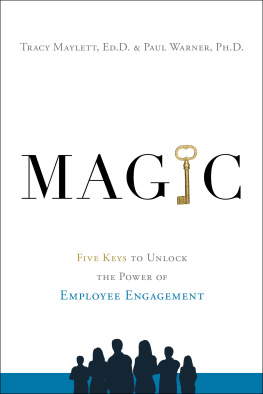

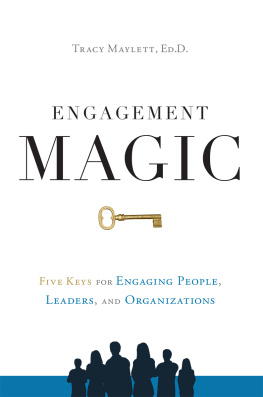
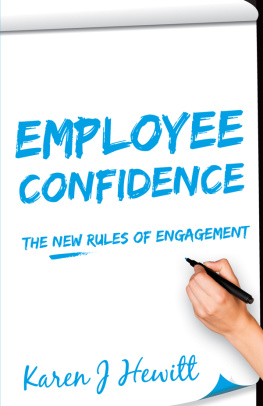
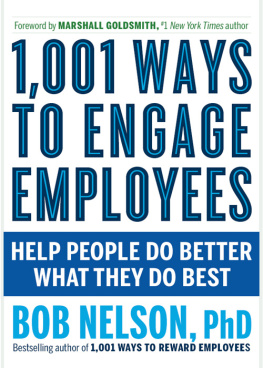
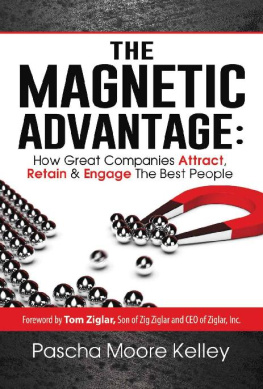
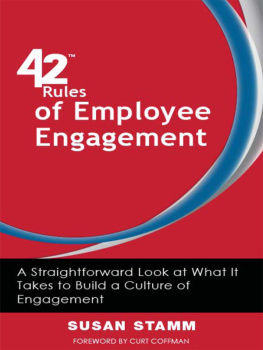
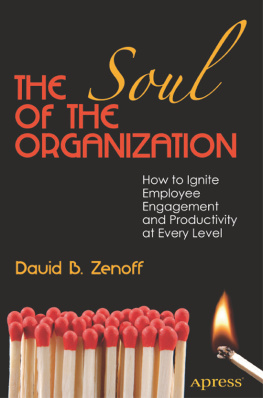

 Defining employee engagement
Defining employee engagement